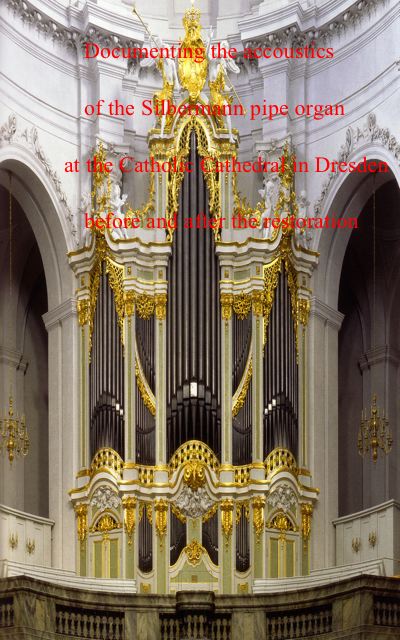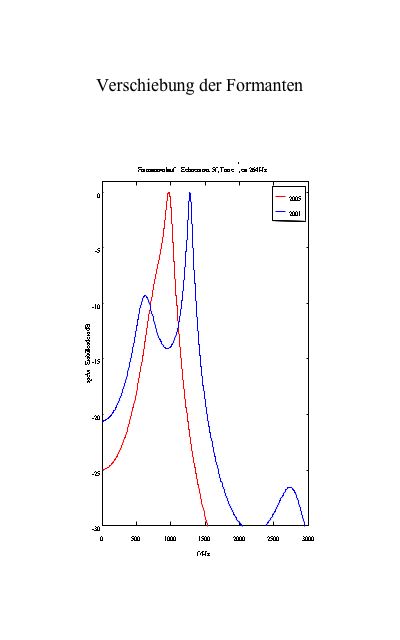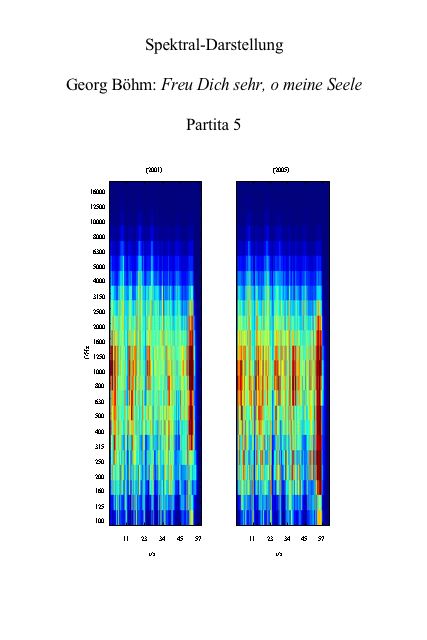


Sound reconstructed: the greatest Silbermann Organ having given back its original sound profile
Prof. Dr. Christian Ahrens christian.ahrens@rub.de
Fachgruppe Musikwissenschaft
Ruhr-Universität Bochum
Universitätsstr. 150
44780 Bochum
Dipl.-Ing. Sebastian Schmidt sebastian.schmidt@rub.de
Institut für Kommunikationsakustik
Ruhr-Universität Bochum
Universitätsstr. 150
44780 Bochum
Prof. Dr. Jonas Braasch braasj@rpi.edu
School of Architecture
Renselaer Polytechnic Institute
110 8th Street
Troy, NY 12180-3590
Popular version of paper 1pMUc2
"Documenting the acoustics of the Silbermann pipe organ at the Catholic Cathedral in Dresden before and after the restoration of 2002"
The famous German organ builder Gottfried Silbermann (born 1683; died 1753) built three organs for churches in Dresden. The only one to have been preserved during World War II was that of the Catholic Court Church (Katholische Hofkirche), finished in 1755 and being the greatest work ever built by Silbermann and his pupils: three manuals and pedal with 47 stops; about 3,500 pipes.

During the centuríes the organ suffered some modifications. One of the main changes was the raising of pitch: in 1755 A4 was at 415 Hz and finally arrived at a frequency of 440 Hz – a little more than a halftone higher than Silbermann’s original tuning. To achieve this tuning all pipes were shortened. By doing so not only scaling of the pipes was totally changed, but also the sound of the whole organ. The shortened pipes of this Silbermann organ had a diameter that was – relatively speaking – much wider than the original pipes.
During the organ’s restoration 2001/2002 all pipes had to be lengthened to achieve the original pitch of 415 Hz. And this led to an astonishing result. The former sound of nearly all stops of the organ had a formant between 1,200 and 1,800 Hz – this compass comprising in human speech the vowels 'ö', 'ä' and 'e', thus the so called compass of nasals. It is hard to claim that G. Silbermann and his contemporaries should have approved just this sound quality. And in fact the sound analysis shows that the compass of formants after restoration has been shifted down to a region between 800 and 1,000 Hz where the vowels o and a are located. The dislocation of formants between 1,200 and 1,800 Hz gave a much better response and sound of the pipes for all stops. At the same time, however, the sound of the whole organ was ameliorated in so far as the perception of the musical structures now is much better than before. (This can be experienced by listening to the respective pieces documented on a CD).
G. Silbermann and his pupils reached a perfect acoustical balance between the organ and the room in which she was placed, by adapting all musical parameters to the requirements of the room. This process wasn’t limited, as one could expect to primary factors of the organ sound, like the disposition of stops, the scaling of the pipes and her intonation, but also includes the pitch.




Given such a strong relation – which can no longer be denied after our measurement results and the acoustical impression of the CD – we have to draw a very important conclusion: the manipulation of the original pitch of an historic organ has such a great impact on the organ’s sound that in any case one has to abstain from. Otherwise, the sound of the instrument which the organ builder adapted in the best way to the acoustical specifics of the room might loose its specific qualities.
The restored organ in the Catholic Court Church actually is the only Silbermann organ at Dresden having the original sound given by his inventor and the greatest on having survived nearly two and a half centuries.



CD: Die Silbermannorgel in der Kathedrale zu Dresden vor und nach der Restaurierung; Hansjürgen Scholz. HOROS Nr. 21102; Dresden 2002
Example for acoustical demonstration: cut 5/17